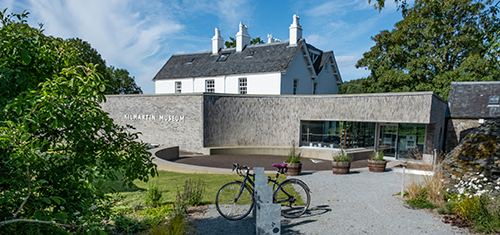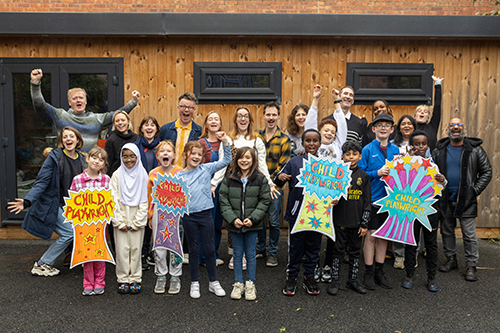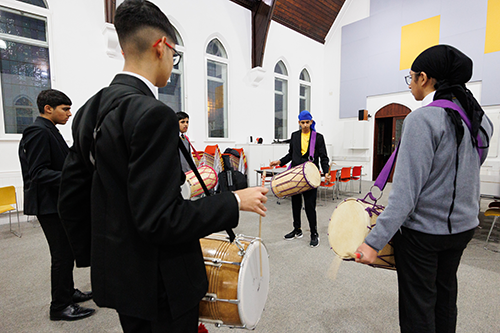Arts, Culture and Heritage 2025 winners: Kilmartin Museum
Why it won
- Outcomes: The development has transformed the museum: vastly increasing visitor numbers, expanding studio and exhibition spaces, and enabling the return of origin artefacts from other museums.
- Value for money: The £8m capital investment will be justified within two years by the museum’s annual£5.4m contribution to the local economy.
- Sustainability: The redevelopment will ensure the museum, and surrounding environment, is a central feature of the area, the community and the economy for years to come.
Preserving an area’s cultural heritage is not only important for inspiring future generations, but it can also provide a vital economic boost to local tourism. The redevelopment of Kilmartin Museum achieves both these goals.
 Opened in 1997 at the northern end of Kilmartin Glen on the rural west coast of Scotland, the charity inspires and educates people by interpreting, explaining and conserving the archaeological landscape, artefacts and natural heritage of the surrounding area.
Opened in 1997 at the northern end of Kilmartin Glen on the rural west coast of Scotland, the charity inspires and educates people by interpreting, explaining and conserving the archaeological landscape, artefacts and natural heritage of the surrounding area.
But by 2012 the museum was no longer fit for purpose. The existing buildings were small and unsuitable; and the gallery did not have the necessary compliance standards to be able to borrow exhibits from the British Museum or National Museums of Scotland. This was a major issue given that some artefacts from their collections had originated from ancient monuments visible from the Kilmartin Museum’s windows.
Ambitious plans were put in place for a major redevelopment of the facilities, expanding education and research spaces, updating the permanent exhibition and improving the overall visitor experience.
The £8m cost was raised through numerous streams, with a large proportion of public funding. It was a truly collaborative effort, involving trustees, consultants and volunteers, with the team facing many challenges along the way, including the Covid-19 pandemic.
It took more than 10 years of planning and fundraising before construction could finally get under way in 2021.The revamped facilities reopened to the public in September 2023 to great acclaim, with vastly improved and expanded exhibition spaces, interactive and audiovisual displays, a learning centre, a bigger shop, more exhibitions by local artists, and improved community outreach projects including free evening classes, heritage walks and a community archaeology dig.
Significantly, the redevelopment has also allowed several artefacts to be returned to the place where they were found, some for the first time since their discovery over 150 years ago. This new display is the most comprehensive gathering of ancient artefacts to be displayed in the landscape where they were uncovered.
The public reaction has been overwhelmingly positive, with 99% of visitors now rating their trip as excellent or good. Visitor numbers in 2024 surged to over 20,000, an increase of 61% on 2019 figures, but it is estimated that the number of visitors to the Kilmartin Museum site were 44,000 and that 70,000 visited Kilmartin Glen to explore the archaeological sites, having had their awareness raised by the museum.
The economic impact of Kilmartin Museum to the economy of Argyll and Bute in 2024 was estimated at £5.4m.
Charity Awards judge Cathy Phelan, chair and owner of Civil Society Media, was particularly impressed by the museum’s efforts to retrieve origin artefacts from the British Museum. “Anyone that has followed the Elgin Marbles saga will know that it’s quite political act for a community to get their items back,” she said.
She added that the Museum’s contribution to the local economy was notable, and showed the huge benefit that an arts destination can bring to a rural district.
Karin Woodley, CEO of Cambridge House, said the application ticked a lot of boxes in terms of preserving local culture and heritage, offering space and opportunities to local artists, its efforts to decarbonise its activities, and its use of new technologies to bring exhibits to life.
OSCR Reg. no. SC022744
Highly Commended
Scene & Heard
Established in 1999, Scene and Heard uses theatre to address the disadvantage experienced by children in Somers Town, Camden – a diverse neighbourhood in the heart of London where 40% of children live in poverty. The charity works closely with local primary schools to identify children in greatest need of its programme. Once selected, the children are given intensive, one-to-one adult attention, helping them to write plays which are then performed by professional actors. With only four staff, every year the charity delivers five playwriting courses, up to four professional productions, two theatre trips, creative outreach programmes, work experience and a young ambassadors programme. Since inception, nearly 450 children have written plays and seen them performed live on stage.
Services for Education
In diverse areas such as Birmingham, language and culture can often be barriers to community cohesion and integration. Harnessing the unique power of music to bring people together, Services For Education works with 98% of Birmingham schools, teaching music to nearly 32,000 children and loaning 27,000 free musical instruments. It also runs 113 free ensembles in Birmingham schools, supporting 4,000 young musicians to develop their talents in a variety of genres and giving them opportunities to perform in venues such as Birmingham Symphony Hall and the Royal Albert Hall. The ensembles have become integral to school communities, enhancing skills, nurturing creativity and fostering connections and friendships across cultural divides.


